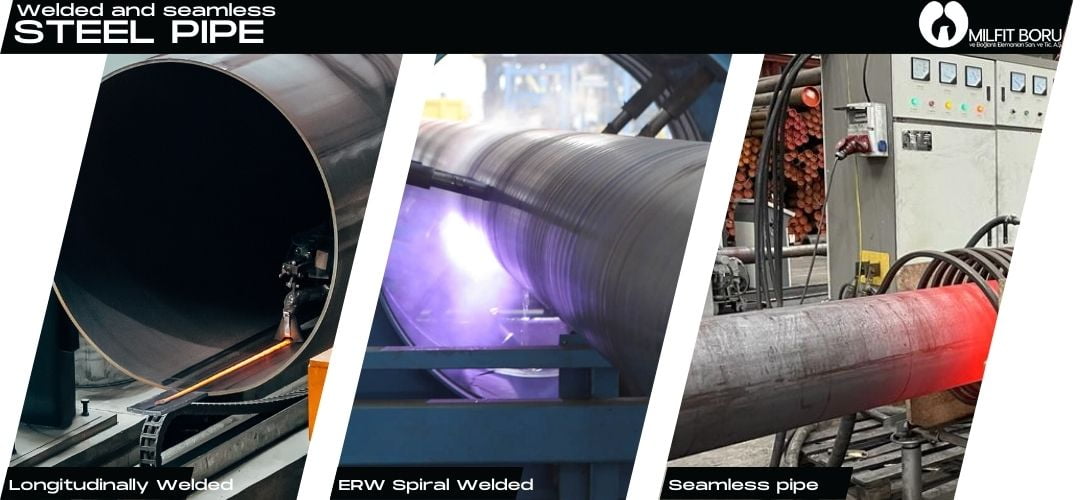What are the differences between welded and seamless steel pipe?
What are the differences between welded and seamless steel pipe?
The main difference between welded and seamless steel pipes lies in their production methods. Seamless steel pipes are made by piercing a solid cylindrical steel billet or bar, while welded steel pipes are made by joining steel sheets or plates together using various welding methods.
Seamless pipes have a more uniform structure, as they are made in one piece without any seams. This makes them stronger and more reliable than welded pipes, which can have welds that are prone to defects or corrosion.
Welded pipes are generally;
Cheaper and easier to produce than seamless pipes, and can be made in larger diameters and lengths. They are often used in applications where cost is a primary concern, or where the pipes will not be subjected to extreme temperatures or pressures.
Seamless pipes are usually used in applications where strength and reliability are of utmost importance, such as in the oil and gas industry or in high-pressure applications. They are also used in situations where a smooth internal surface is required, such as in the manufacture of precision instruments.
Features of welded steel pipes:
- Welded pipes are made by joining steel plates or sheets using various welding methods, such as electric resistance welding, submerged arc welding, or longitudinal welding.
- Welded pipes have a welded seam that runs the length of the pipe, which can potentially be a weak point or point of failure.
- Welded pipes can be produced in larger sizes and lengths, making them suitable for applications that require big pipes.
- Welded pipes are generally less expensive than seamless pipes.
Features of seamless steel pipes:
- Seamless pipes are made by piercing a solid cylindrical steel billet or bar to form a hollow tube.
- Seamless pipes have no welded seams, which makes them stronger and more reliable than welded pipes.
- Seamless pipes have a more uniform structure than welded pipes, which makes them better suited for high-pressure and high-temperature applications.
- Seamless pipes have a smooth interior surface that reduces friction and turbulence, making them suitable for applications where a clean flow of fluids is required.
- Seamless pipes can be made in smaller sizes and lengths than welded pipes, making them suitable for applications where smaller pipes are needed.
In summary;
The choice between welded and seamless steel pipes depends on factors such as cost, the application requirements, and the specific needs of the project. While welded pipes are cheaper and easier to produce, seamless pipes offer superior strength, reliability, and smoothness of internal surface.

